We’ve never needed an excuse to like the Suzuki Swift Sport. Japan’s dinkiest hot hatch turned up in 2005 and, in the unassuming manner so typical of its maker, took the decade by tiny, localised storm.
Its mantra – endlessly extolled by us but never claimed by its maker – was that you could neither go faster nor have more fun for less. That remains true to this day: an entry-level Ford Fiesta ST is almost £4k more; a Caterham Seven 160, £2k – and you have to build it yourself. The Swift’s recipe, commensurate with the price, has remained irresistibly basic: zappy four-pot petrol engine up front, lean, low-tech chassis underneath, hollow-sounding body on top. Because it weighs about 200kg less than a Volkswagen Polo GTI, it has roughly the same power-to-weight ratio as a Peugeot 205 GTi, making its brand of cheap thrill about as archetypal as you can get.
This article was originally published on 22 October 2016.
So no excuse needed. But in 2017 we got one anyway, Suzuki replaced the Sport with a new version powered by a turbocharged 1.4-litre Boosterjet engine. Fair enough, you might think. Yet the demise of the car’s unostentatious M16A engine marked the end of quite an era. As of its end, there will be no hot hatch of any stripe left boasting the industrious, unfiltered fizz of a naturally aspirated engine. The mighty fuel-injected epoch that assimilates everything from the Mk1 VW Golf GTI to the Clio V6 Renault Sport to the Ford Racing Puma will be definitively dead and gone – never to return.

Broadly speaking, its exodus was as inevitable as the slow demise of the carburettor. Fiendishly clever injectors, inventive valve timing, exotic materials and lightweight internals could only prop up the tech for so long. If Porsche couldn’t justify prolonging the life of its rightly celebrated flat six into the 21st century, what hope for the more mainstream high-revving four-pot? None. It was always destined to be too thirsty, too dirty, too difficult to tune and too obviously handicapped by its own function to endure.
Nevertheless, where Porsche’s boxer is getting the long goodbye, the hot hatch equivalent goes into the night almost unheralded. Mostly that’s because the segment’s association with forced induction – the car industry’s pre-electrification catch-all solution to emission legislation – is itself decades old and has already produced numerous legends of the genre. But be that as it may, the fading away of the naturally aspirated engine deserves better. Hence this three-car funeral procession along the south coast in the last of the summer sunshine and our final sentimental salute to the passing of the guard.
Let’s start in the Renault Sport Clio Cup. Nowhere is the black armband more appropriate than within the clammy grey plastic-lined cabin of Renault Sport’s recent past. The slightly porky RS 200 is not the finest iteration of the long-running model (that prize goes arguably to the Sachs damper-shod 182 Trophy) but it does sport the most powerful non-turbo variant of Renault’s F4R engine, a 1998cc scurrier that evolved from the one shoehorned into the decidedly epic Clio Williams.
What contrast its zesty, unhindered thrum is to the current incumbent. Because the fattened and head-noddingly firm Cup chassis is so absurdly well sorted, it’s possible in more distant recollection to think its thrashy 197bhp motor a mere bit player in Dieppe’s ensemble piece. Yet, sat crouched over the dustbin lid-sized wheel, with one hand on the snatchy manual gearlever, it’s impossible not to acknowledge the sheer level of game the motor brings with it. The current Renault Clio is, after all, endowed with a first-rate chassis, too, one smoothed into buttery consistency by the addition of hydraulic bump stops, but the mediocrity of the dual-clutch auto and reedy Nissan-sourced engine has doomed it to buyer neglect.
All the more astounding, then, that this was the combination optimistically pitched as emollient to the departing F4R’s modest-seeming mid-range performance. Always the Achilles heel of natural aspiration, and especially so when compared with the blasé generosity of a modern blower, the older Clio develops just 159lb ft, only very slightly more than Ford now extracts from its keenest 1.0-litre three-pot. Naturally, an additional half a decade of hairtrigger hatches has made the Cup’s urgency shortfall noticeable, but I’d prepared myself for molasses below 4000rpm and that isn’t quite the case. Short ratios in first, second and third and midget-like proportions ensure the car stays punctual enough low down. Beyond, the progressive and strenuous buildup of revs has the engine’s crank speed syncing with your ambition.
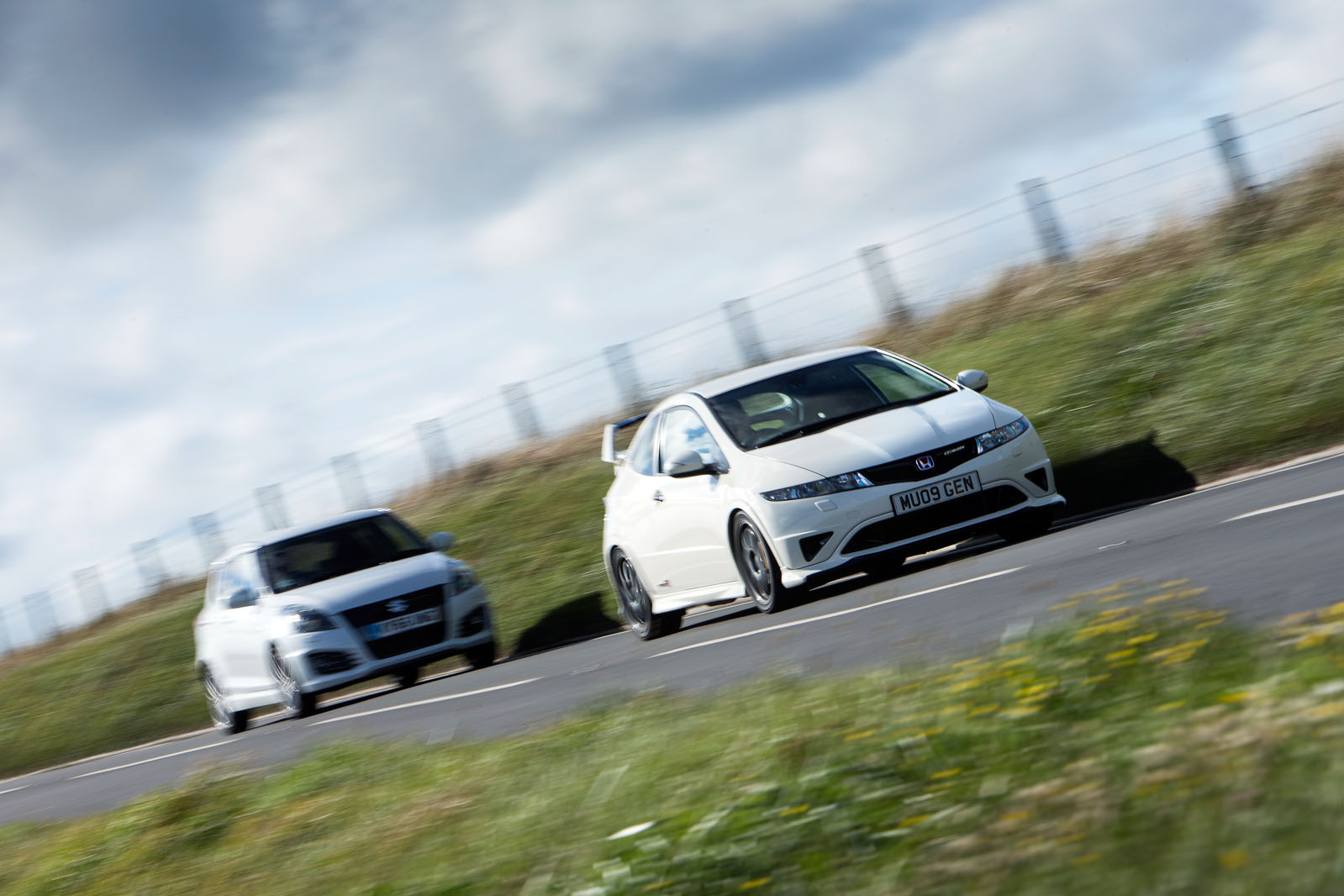
This is crucial because it means that any aspiration to go fast in the Clio, or any naturally aspirated car, requires premeditation – followed by toe-to-bulkhead will power. A Mini Cooper S will rock and roll from 1250rpm, a Seat Ibiza Cupra 1450rpm: they’re driven swiftly almost by default. In the Cup, it’s only your preparedness to thrash the F4R that makes it fast. More pertinent, without doing so, you’d never know why the car is ultimately so revered because it’s only with the valve gear trilling beyond 6000rpm that the throttle response – and the chassis’s puppet-on-string reactions – goes from the sublime to the ridiculous. As an example of front-drive adjustability, the Clio is surpassed in my experience by only the 1990s-vintage Honda Integra Type R. At supermini size, its delicacy – a trifecta of steering feel, spring stiffness and obliging weight shift – is unchallenged by anything encumbered with a turbine’s latency.
Which is precisely why you’d buy the Clio: for the package deal. No one in 2009 was buying the Cup for the F4R motor – and I wouldn’t necessarily suggest you do now. Instead, the Renault is a perfect example of a chassis and drivetrain so acutely compatible that severing one from the other has made its successor precisely half the model it ought to have been.
With the Honda Civic Type R, our other hall-of-famer along for the ride, you bought the car for the engine – period. Variable Valve Timing and Lift Electronic Control (more enigmatically, VTEC) was Honda’s way of maximising the volumetric efficiency of a 2.0-litre four-cylinder petrol motor in a domestic market that penalised larger displacement. Where Toyota, Nissan and Subaru chose the turbocharger (and Mazda the rotary engine) to do the same job, Honda’s engineers perfected alternative camshaft profiles; one lobe for low-rev efficiency, the other to keep the valves open longer for greater performance.
The mechanical description hardly does justice to the result, though – especially in something as shamelessly bespoke as the 2009 limited-edition Mugen. Any Type R would have served its purpose here, but Honda’s hand-built European prodigy – replete with new pistons, ECU, camshafts, exhaust and a 237bhp output – is something special. Like all lusty VTECs, at low speeds it pulls, but only in the dawdling whine of half-mast effort. There’s only about 135lb ft and 140bhp on tap below 5500rpm, making the lightened Mugen feel like a sprinter roped to a tractor tyre.
This is fast car purgatory, a takeyour-medicine period during which you reflect on how much spring and damper technology has moved on from the Mugen’s palpable crash/ bang rebound. Then, suddenly, from a very gentle gradient, the VTEC’s power curve goes up like a Eurofighter Typhoon. Accompanied by some deep internal war cry, the camshaft unshackles the valves and the Civic lunges forward on a prolonged and enthralling 8500rpm love grind that has the steering wheel squirming ditch-ward.
The Mugen has it all: sound, tempo, urgency, elation, intoxication – all laced with a sense of high-toned recklessness that is unmatched among its current equivalents. A Ford Focus RS or Audi RS3 are vastly quicker than the Civic in real terms, but with cliff-faced torque curves, they tend to smooth-talk you into breaking the law. By mechanically separating sane, fuel-sipping normality from its through-thelooking-glass alternative, the Type R knowingly encourages you to light the pyre on which your licence will likely be burnt. Even the Clio, mounted on that sublime chassis, can be driven pleasurably at seventenths, but the Mugen is like a floundering waterskier: slow down too much and you sink into the gloom. Better to go all white knuckle with it, a human VTEC functioning in the kind of heightened, half-scared state consistent with the high-octane drama happening under the bonnet.

So where does that leave our swansong, the comparatively humble Swift? Well, not as far back as you might think. Clearly, it is slower than its counterparts and not furnished with quite the same degree of theatre, but it’s more amenable and likeably less fraught, too. The Sport’s motor is essentially the same unit found in the SX4. It’s no fire-breather, rather breathed on to deliver its 135bhp at a racier 6900rpm. The torque actually turns on a little later than in the Clio and the gearing is plainly taller (the Swift is the only car here you’d happily share time with on a long motorway journey), but the agreeable small car vibe is kept wonderfully intact – not least because of its insubstantial kerb weight.
Although neither the Clio nor Civic is particularly heavy, neither car manages to communicate lightness like the Swift, which seems barely any more strenuous on its springs than a spaniel is on its paws. The steering is light, too, and although it lacks the preternatural, soft-edged intuitiveness of the Cup, it doesn’t want for feel. ‘Honest’ is the adjective my colleague Matt Prior likes to use for this kind of chassis.
I can’t think of a better one to apply to the engine. It’s a plain-hearted trier, more characterful with its variable valves striving rather than slumming it and never unproductive because its burden is so helpfully small. It is also the only car here that can be driven to its exuberant potential on a B-road without gambling on a magistrate’s leniency.
Like the Clio, though, it all just goes together. The whole is much greater than the sum, and the sum is never obligated with any more pretence than that of a cheap, cheerful runaround. It’s understated and simple but virtuous and authentic and true, too. What better way for mainstream natural aspiration, the most straightforward of intoxicants, to finally slip from the sporting stage. Small petrol engines, of course, and small super-fast hatches for that matter, are going nowhere. They’ll get faster and loopier still – maybe lighter, too, in the fullness of time. But recapturing the vitality and rudimentary loveliness of the Swift and its vanishing motor will be one of the industry’s tougher asks.
Read more
From Mazda to Mustang: driving five traditional sports cars​
Used car buying guide: Honda Civic Type R
Under the skin: how turbochargers have evolved​




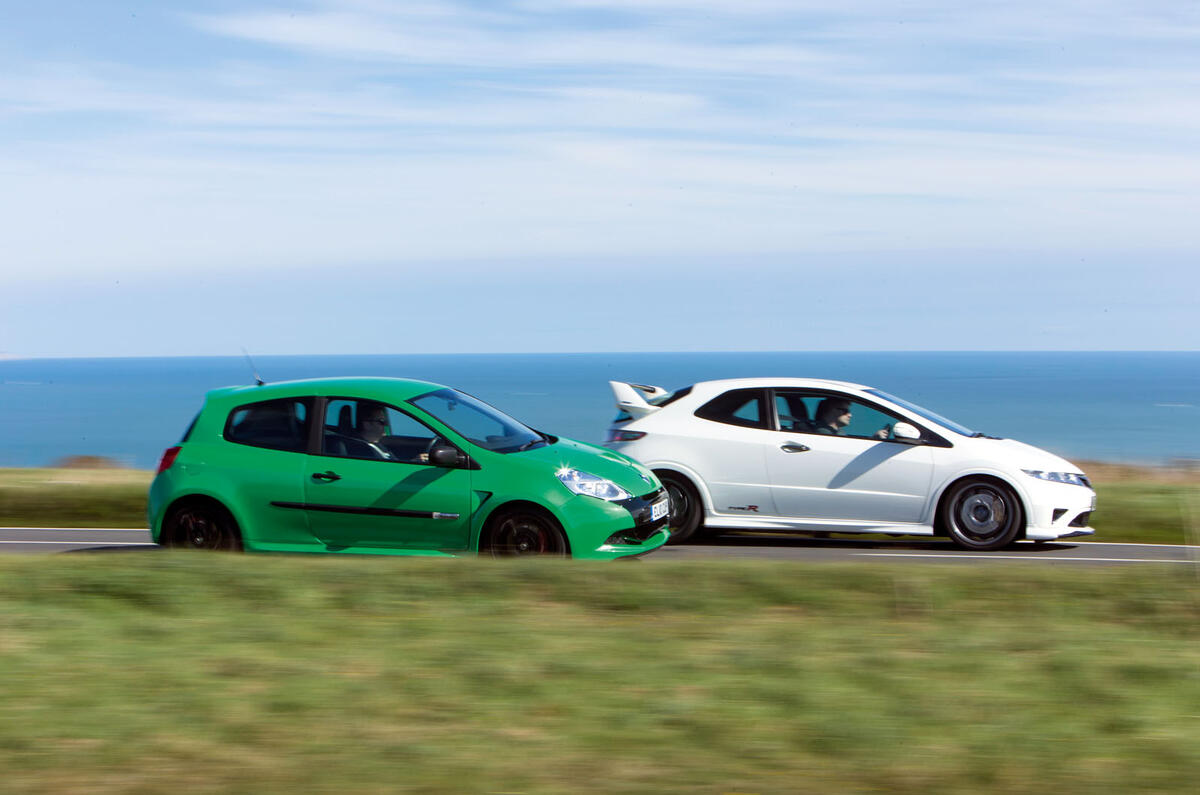



















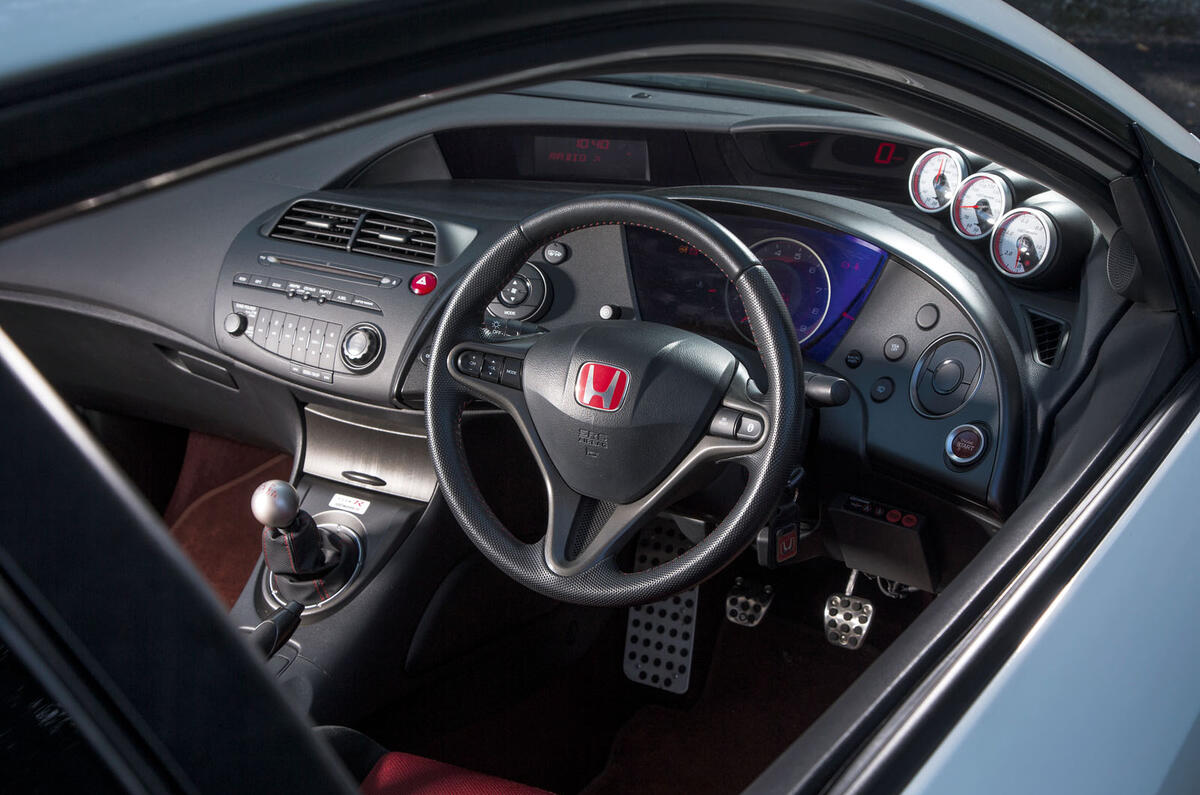

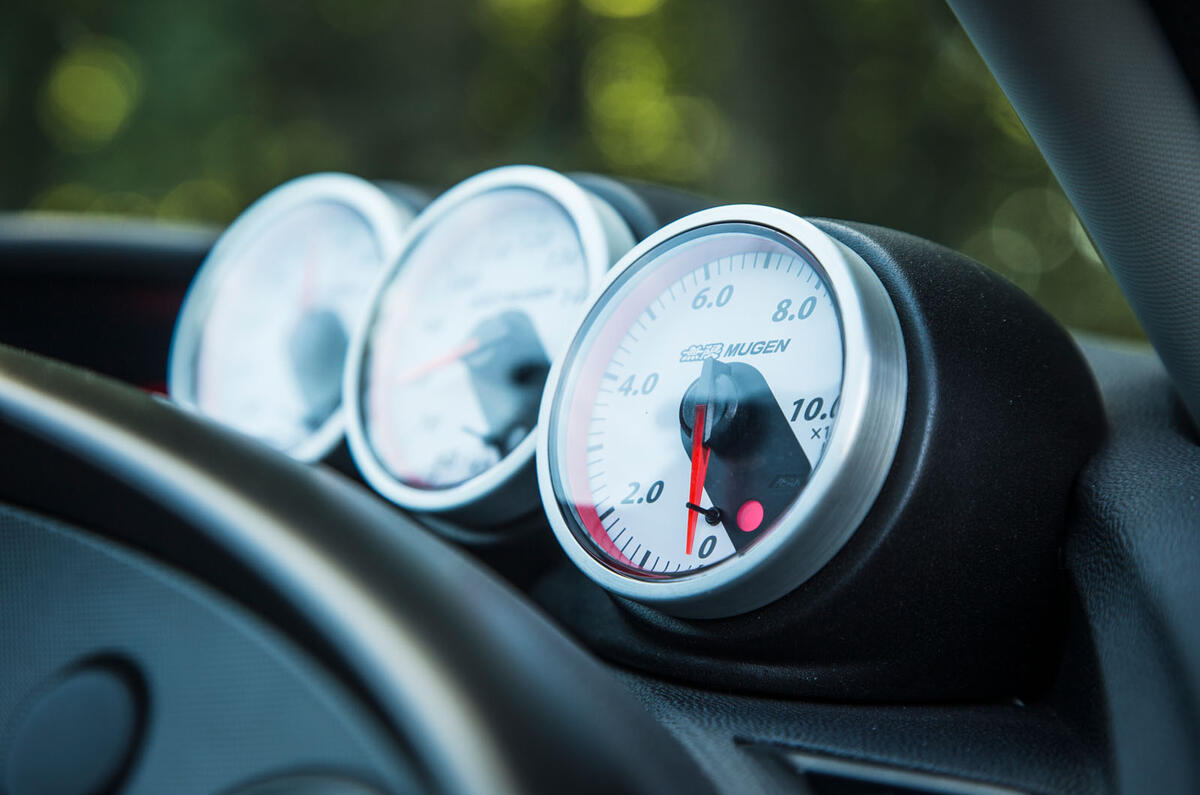

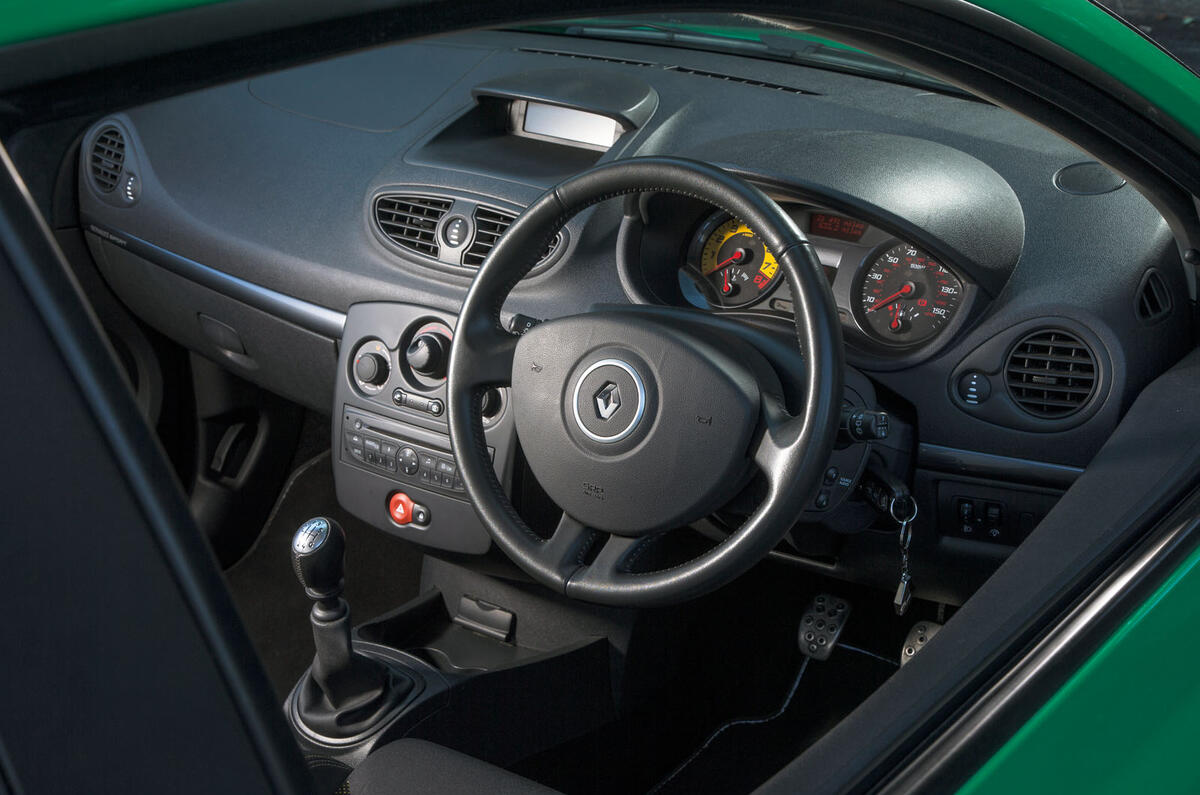





















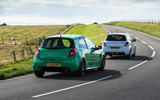








Join the debate
Add your comment
Great Article for greats cars
Just the V6, nothing much to say
I'd forgotten how hard it was
I'd forgotten how hard it was to read an article by Nic Cacket.
I need a rest.
Good news. N.a. not dead. Yet
89hp - similar performance figures to the swift sport ??
Emmm sorry but I couldn't call a car with 89hp a "swift naturally aspirated super mini"
Swift